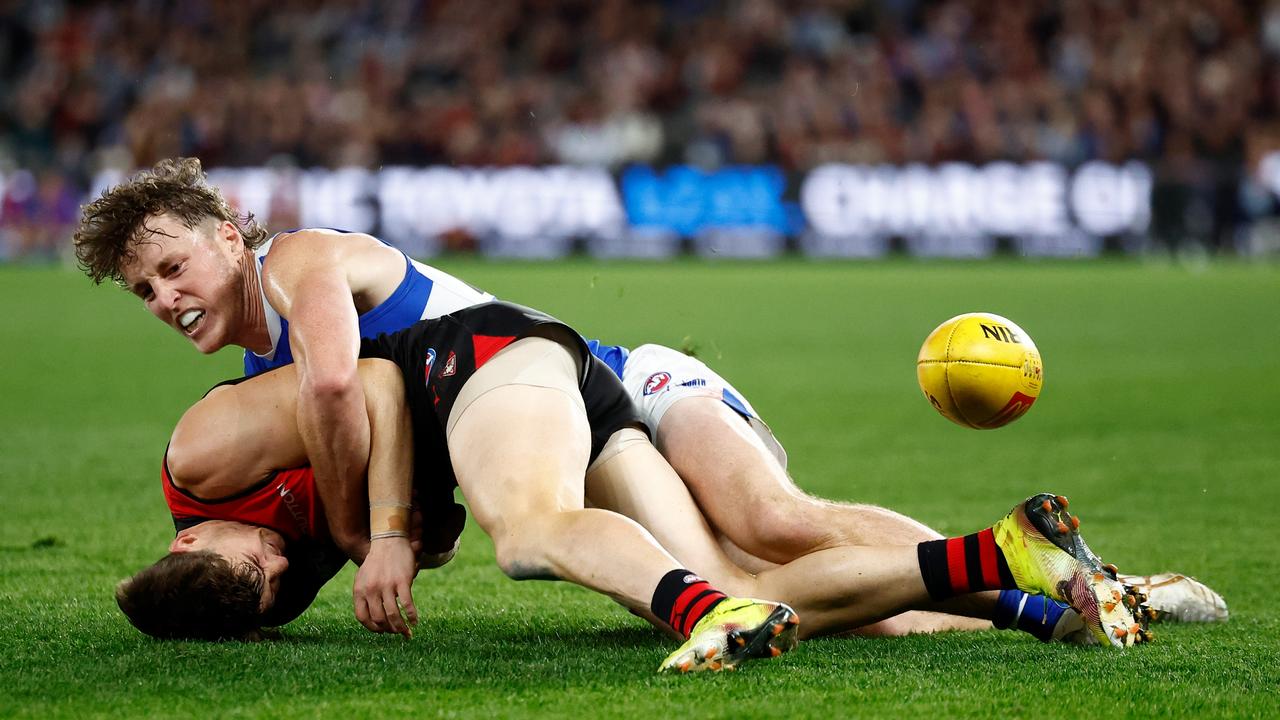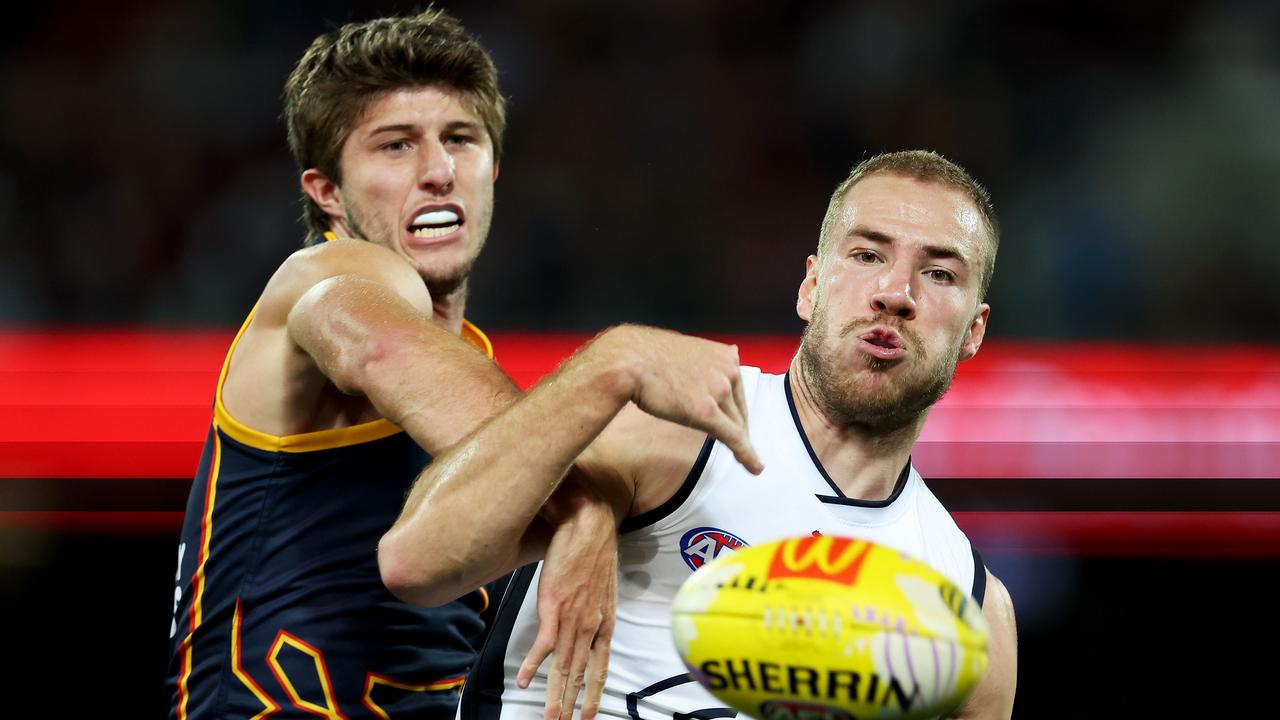Australian Football Hall of Fame 2023: SA stars Michael Aish, Bruce McAvaney and Tom Leahy
They made significant contributions to the game of Australian football but these South Australians came from different eras and made their mark in a multitude of ways.
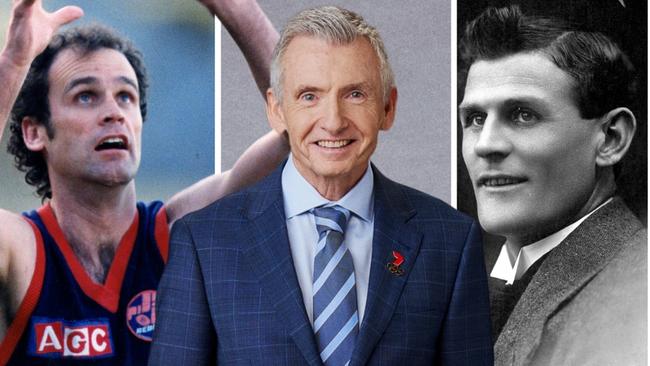
AFL
Don't miss out on the headlines from AFL. Followed categories will be added to My News.
The South Australian contribution to the game of Australian Football has been celebrated again with the induction of four greats.
Find out what made Michael Aish, Bruce McAvaney and Tom Leahy champions of the game and how Aish and McAvaney reacted to the honour bestowed upon them.
The soundtrack to our footy lives
– Glenn McFarlane
He’s been the soundtrack to the lives of two generations of football fans, so it seems fitting that Bruce McAvaney has been inducted into the Australian Football Hall of Fame.
On receiving the honour on Tuesday night, he joined elite company, alongside many of the footy champions he has called in almost half a century of broadcasting.
McAvaney, 70, is one of the most respected and trusted broadcasters in the country, and even though he hasn’t called an AFL match since the 2020 Gabba grand final, he will forever be richly connected to the game.
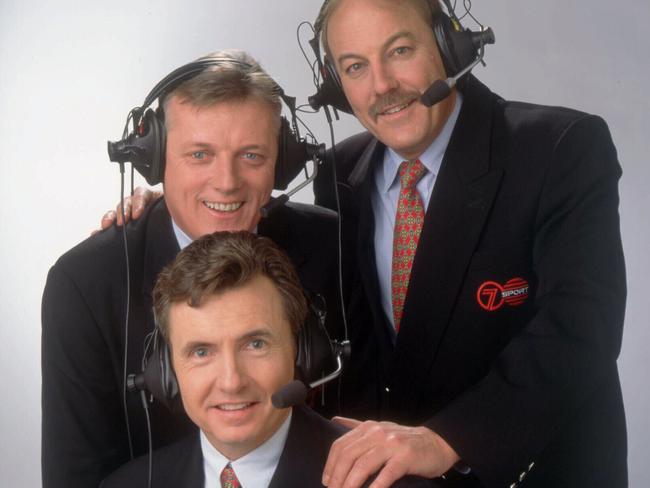
So much so that AFL chairman Richard Goyder couldn’t wait to make public the fact that McAvaney would be joining the hall of fame this year, letting the secret slip at the AFL season launch in March when he was also elevated to AFL life membership.
It was, dare we say it, delicious.
Enthusiasm, depth, accuracy and a sense of the occasion has defined McAvaney – and his career – since he relinquished a role as a Telecom clerk in 1976 to launch his career in the sports media.
Asked by the Herald Sun last year what drives him, McAvaney said a sense of self-pride and a desire to always get better.
“I have got a lot of personal pride and for me that’s a key thing,” he said then. “You are trying to hold up those standards, not just for you, but it is for the public too.”
“The thing about our job is that it is instantaneous. You can’t take it back.”
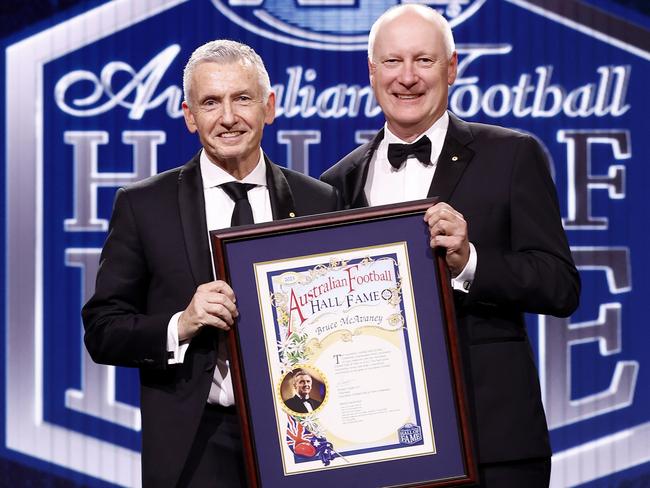
McAvaney’s unmistakeable voice and his encyclopaedic mind formed a key reason why he became so connected with audiences in football, as well as his other passions, the Olympic Games, athletics and horse racing.
“People might say that ‘Bruce knows everything’, well I don’t know everything at all,” he said. “In fact, I know half as much as some people think I do, and probably a bit more than others think I do. But I always try to remember that I am calling things that are so enjoyable.”
McAvaney started calling footy in 1978 in his native South Australia and would be the SANFL’s lead caller from 1981-83.
He joined Channel 10 in 1983 and worked with the network until 1989, the year in which he joined Channel 7.
His move to Seven started one of the great partnerships in Australian sports broadcasting as he went on to cover more than 1000 games with the network from 1989 to 2020.
His connection to the AFL has been just as strong, as the Brownlow Medal host for many years as well as hosting other league and industry events.
McAvaney called 20 grand finals in that time, with one of his most memorable being alongside his great friend and co-caller Dennis Cometti in his last AFL match with the network when the Western Bulldogs broke a 62-year premiership drought in 2016.
That call remains one of McAvaney’s favourites.
Cometti was elevated to the Australian Football Hall of Fame in 2020; now his great mate has joined him.
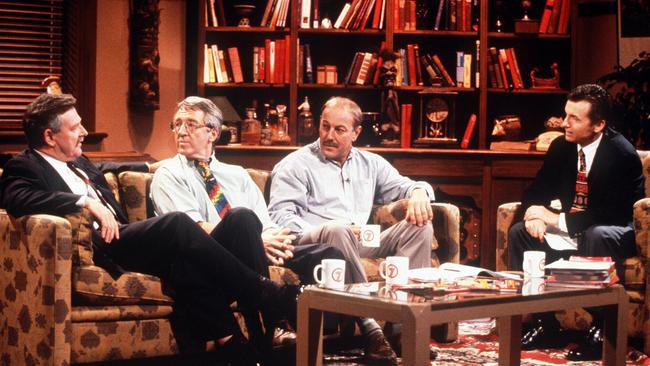
McAvaney’s sense of the occasion was superb, as was the case in the dying moments of the drawn 2010 grand final between Collingwood and St Kilda.
He perfectly described the pivotal moment when St Kilda’s Lenny Hayes drove the ball deep into attack with the Saints one point down and only an out-of-position Ben Johnson and a dangerous Stephen Milne between the rest of the players and the vacant goalsquare.
McAvaey said: “Hayes … belting the ball forward. Johnson quickly off the mark, Milne read it best, the ball’s bouncing. Scores are level.”
Then he posed the question: “What are you doing next week?” And when time counted down, he added: “It’s going to be a draw. It’s unbelievable, but it has happened.”
It seemed appropriate that McAvaney’s last call in an AFL game came in a historic grand final when the AFL defied a Covid pandemic to get a season underway against all odds.
Through parts of 2020, McAvaney had been forced to call remotely, but he made the trip to the Gabba on that famous night when Dustin Martin and Richmond triumphed again and he went out with a bang.
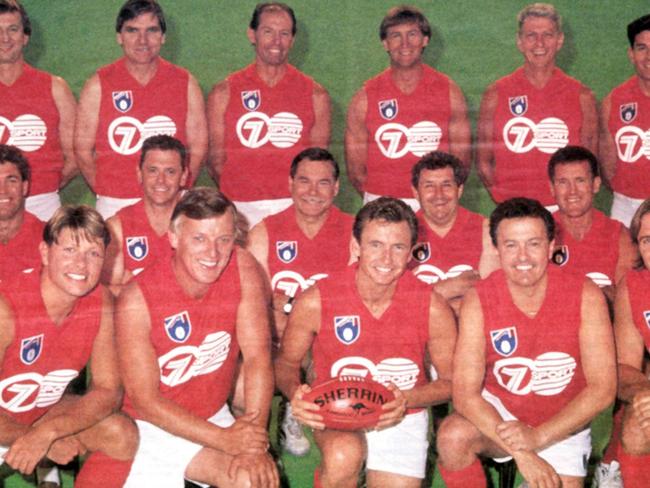
While he still does work for Channel 7 on a range of sports including horse racing, McAvaney called time on his footy calling ahead of the 2021 AFL season.
He couldn’t have been more grateful for what he had achieved and experienced.
McAvaney has always believed that whatever your calling is, you have to do it with passion and with purpose.
As he told the Herald Sun before that grand final in 2020, “I am of the view that we are all improving. I have learnt that I am far from perfect. I have some nights when I call better than others and when you don’t have as good a night, you learn from that.
“You also have to have a laugh and say ‘We are not surgeons, it’s not life and death’.”
Why Aish never left Norwood
– Matt Turner
Memories of boundary advice and backyard drills came flooding back to Michael Aish when the Norwood champion received a phone call from AFL Commission chairman Richard Goyder in April.
Initially shocked to learn of his induction into the Australian Hall of Fame, Aish immediately began thinking about his late father, former Redlegs captain Peter Aish.
Aish said his dad, who died in 2021, aged 85, was the biggest influence on his 307-game, two-premiership SANFL career.
“Dad coached us at Fulham Primary, when we went to Pulteney (Grammar) he’d have our border collie and be walking around the boundary line and if anyone did anything dirty on either side, he’d chastise them,” said Aish, who played at Norwood alongside older brother, Andrew.
“In our backyard as kids, he’d strap a pillow to his back, I’d stand in front of him and throw the ball up to Andrew to take a speccy over him, then we’d swap around.
“I looked up to him because he taught me everything – and Mum, of course, with discipline – but just to play footy and the way to play.
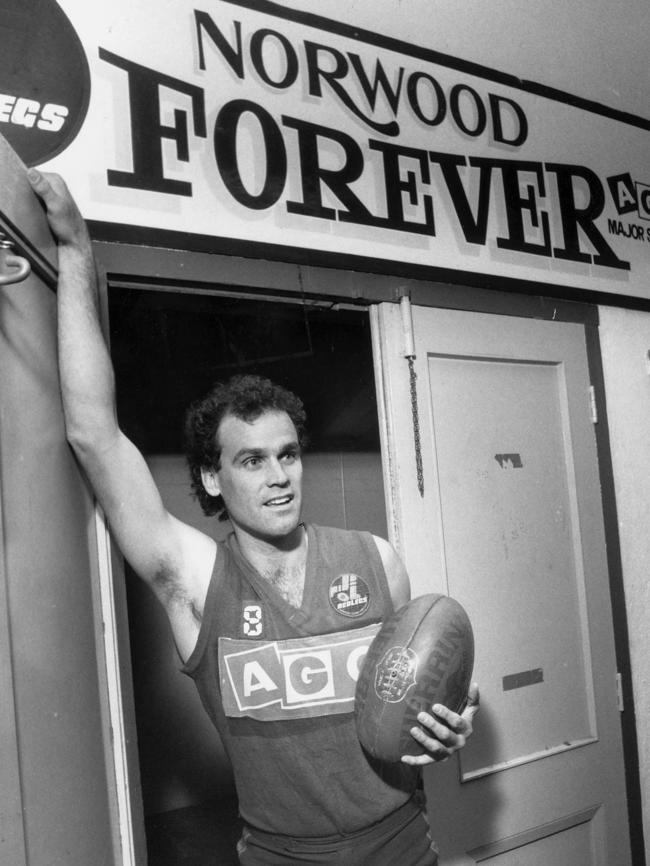
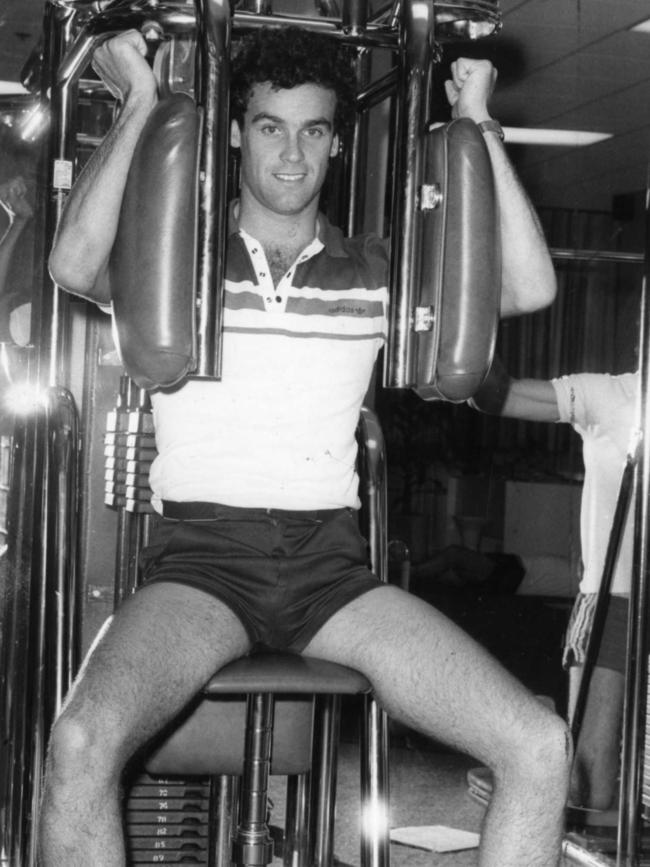
“When Richard Goyder rang, I couldn’t really speak because I just thought of my dad immediately and what it would’ve meant to him, how proud he would’ve been and all that he did for me.”
Aish actually grew up in West Torrens’ zone and went to primary school in West Adelaide’s.
He played mini league with the Bloods and would attend their senior matches, before being invited to Eagles training in 1978.
When a newspaper article was written about Aish training with West Torrens, Norwood chief executive Wally Miller rang Peter straight away and said “what the heck’s Michael doing there?”
Aish went on to join the Redlegs, winning rookie of the year in 1979 then breaking his collarbone twice the next season, which ended with a grand final loss.
In his third campaign, he won the Magarey Medal, aged 20.
“We had a very good side and I was lucky enough to get onto a half-forward flank then onto the ball in 1981 and was fortunate to have a pretty good year,” he said.
“I didn’t think ‘I’m doing really well’, I just loved playing the game – it was my whole life.”
Aish considered his strengths to be reading the play, his attack on the ball, skill level and “being able to do something with it more often than not”.
He played in two premierships, in 1982 and 1984, ranking the second far higher.
“We were 1-5 at the start of the season then finished fifth … and to be able to beat a very powerful Port side that we’d lost to in 1980 was phenomenal,” he said.
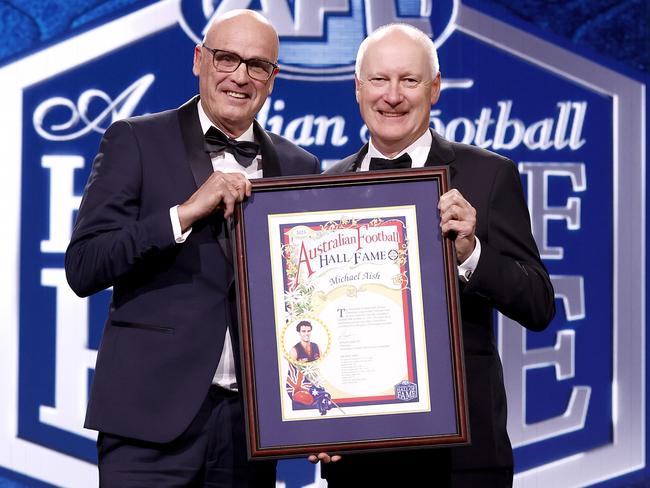
Aish received VFL interest from clubs including the team he barracked for Richmond, as well as Brisbane, Sydney, Collingwood, St Kilda and Essendon.
But he never took up the opportunities due to “massive anxiety”.
“It was anxiety about being in the unknown and I didn’t know how to deal with it or talk to anyone about it,” he said.
“I’m kicking myself a bit now to think it would’ve been wonderful to play, particularly with my Tigers.”
Aish said he had to modify some of his pre-season training in the latter part of his career due to a back issue he dealt with from 1984 that got worse over the years.
By the time Adelaide formed its inaugural squad in 1990, he was “pretty well cooked”, but he was curious about what would transpire.
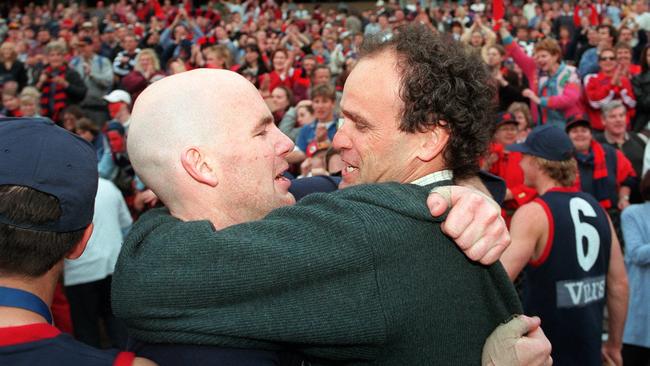
“Their first night of training I drove … to Football Park and hid behind a pillar so no one could see me,” he said.
“I just watched them train for about 20 minutes and I was thinking of what might have been then just drove home.”
Aish, who now ran a football academy in his name, looked back on his family’s time at the Redlegs with tremendous pride.
“I go and support Norwood whenever I can and whenever they have success, it gives me great pleasure,” said Aish, whose son Jesse and nephew James also played for the Redlegs.
Tom Leahy, the best SA ruckman quite simply
– Matt Turner
Ask a football history buff how to best describe Tom Leahy and they are forthright.
“He’s quite simply the best ruckman South Australia has ever produced,” SANFL historian Nick Haines told this masthead.
Leahy’s 169-game SANFL playing career ended a century ago, in 1921, as a Magarey Medallist and three-time runner-up, a triple premiership winner, three-time best and fairest, and a state representative in 31 matches.
On Tuesday night, another accolade was added to his illustrious CV – Australian Football Hall of Fame inductee.
Haines, a member of North Adelaide’s history committee and a heritage research project officer at the AFL, said Leahy’s recognition was long overdue.
Leahy’s granddaughter, Christine Cornish, said her family was chuffed.
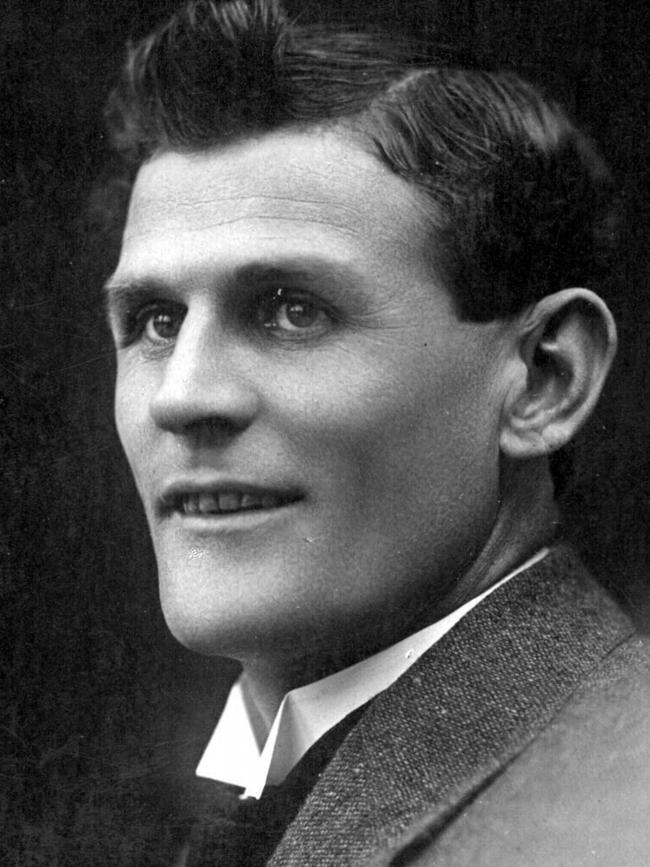
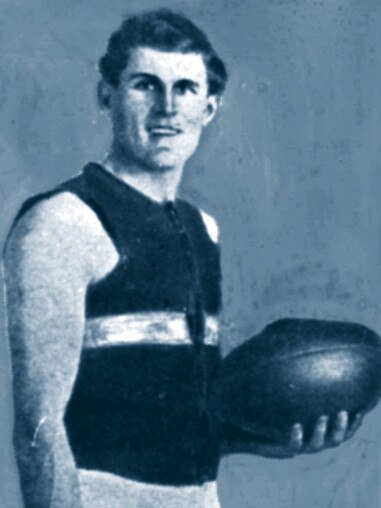
Her mum, Betty, Leahy’s only child, died three years ago but “if she was alive, she’d have been absolutely thrilled to bits”.
“She was always so proud of him,” Cornish said.
Born in 1888 and raised in the west end of the city, Leahy made his league debut for West Adelaide at the age of 17, alongside his brother, Bernie.
He made his mark in his second campaign, winning the Bloods’ best-and-fairest and representing South Australia.
In his fourth year in 1908, Leahy established himself as the best ruckman in the state and played in both West’s premiership team and Champions of Australia crown.
Leahy was very tall for the time, standing 193cm and having large hands.
His strength and intelligence helped him counter the tactics of the era that allowed a second player in the ruck combination to impede the opposition’s No. 1 follower.
“Mum always said when he came home, he’d come back black, blue and bleeding,” Cornish said.
“He’d always put 110 per cent in.”
Another flag followed at West in 1909, before Leahy left the Bloods with Bernie and their brother Vinnie due to upheaval at the club, joining North Adelaide.
Leahy quickly established himself as one of the Roosters’ stars, winning the Magarey Medal in 1913 and becoming their captain in 1915.
When the competition resumed in 1919, after World War I, Leahy was appointed skipper of the state side.
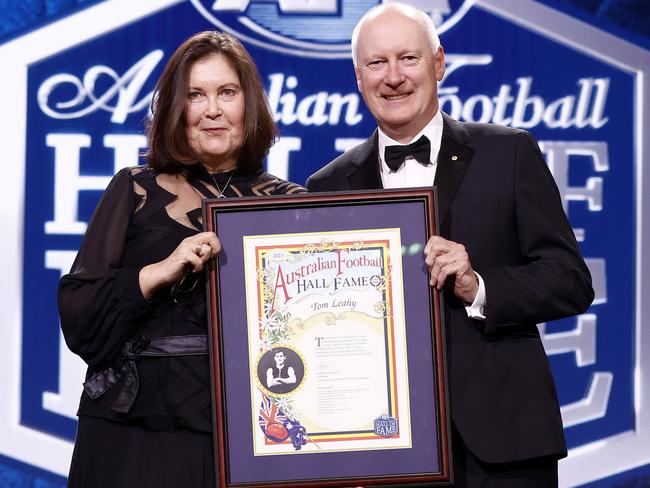
The next season, he helped steer the Roosters to the premiership and led SA in a rare win over Victoria at the MCG.
Leahy added to his legacy by steering Norwood to two flags as non-playing coach in 1922 and 1923.
He died in 1964 when Cornish was a child.
In 1977, former Advertiser journalist and West Adelaide star Merv Agars named Leahy as first ruck when he compiled his best South Australian team of the past 100 years.
A year earlier, Advertiser reporters Mike Coward and Geoff Kingston ranked Leahy fifth on their list of the best South Australian players to that point.
Cornish was sure her mum would be watching the induction ceremony on Tuesday.
“I was in tears when (AFL chairman) Richard Goyder rang,” she said.
“He’s in the North Adelaide Hall of Fame and the South Australian one, so this is the cherry on top.”



